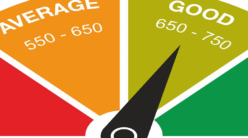Credit card debt can be a significant burden, but with the right strategies and tools, you can effectively manage and pay off your debt. This article explores the best way to pay off credit card debt, including the use of budget tracker apps, low interest balance transfer cards, and other money-saving tips to help you regain financial control.
Understanding Your Debt
Before diving into strategies, it’s essential to understand the extent of your debt. Make a list of all your credit card balances, interest rates, and minimum monthly payments. This overview will help you develop a clear plan to tackle your debt effectively.
Best Way to Pay Off Credit Card Debt
The best way to pay off credit card debt depends on your financial situation, but here are some commonly recommended methods:
The Snowball Method
The snowball method involves paying off your smallest debt first while making minimum payments on the rest. Once the smallest debt is paid off, you move to the next smallest, and so on. This approach provides quick wins and keeps you motivated.
The Avalanche Method
The avalanche method focuses on paying off the debt with the highest interest rate first. By targeting high-interest debt, you reduce the overall amount of interest paid over time, saving money in the long run.
Debt Consolidation
Debt consolidation involves combining multiple debts into a single loan with a lower interest rate. This simplifies payments and can reduce the interest you pay. Consider a personal loan or a low interest balance transfer card for consolidation.
Utilizing a Budget Tracker App
A budget tracker app is an invaluable tool for managing your finances and staying on top of your debt repayment plan. These apps help you monitor your income, expenses, and debt payments, ensuring you stick to your budget and avoid unnecessary spending.
Top Budget Tracker Apps
- Mint: Mint offers a comprehensive overview of your finances, including tracking expenses, setting budgets, and monitoring your credit score.
- YNAB (You Need A Budget): YNAB is designed to help you allocate every dollar effectively, making it easier to manage your debt repayment.
- PocketGuard: PocketGuard shows you how much disposable income you have after bills and savings, helping you make informed spending decisions.
Using a budget tracker app can help you identify areas where you can cut back on expenses and allocate more money towards paying off your debt.
Low Interest Balance Transfer Cards
One of the most effective ways to reduce your interest payments is by using low interest balance transfer cards. These cards allow you to transfer your existing credit card balances to a new card with a lower interest rate, often with an introductory 0% APR for a set period.
Benefits of Balance Transfer Cards
- Lower Interest Rates: Reduce the amount of interest you pay, allowing more of your payment to go towards the principal balance.
- Simplified Payments: Consolidate multiple credit card balances into one payment, making it easier to manage your debt.
- Introductory Offers: Take advantage of promotional 0% APR periods to make significant progress on paying off your debt without accruing additional interest.
Tips for Choosing a Balance Transfer Card
- Compare Offers: Look for cards with the longest 0% APR introductory period and the lowest balance transfer fees.
- Read the Fine Print: Ensure you understand the terms and conditions, including what the APR will be after the introductory period ends.
- Avoid New Purchases: Focus on paying off the transferred balance rather than making new purchases on the card.
Money Saving Help
To maximize your debt repayment efforts, consider implementing additional Money Saving Help
Strategies:
1. Create a Strict Budget
A detailed budget helps you track your spending and identify areas where you can cut back. Use a budget tracker app to stay organized and committed to your financial goals.
2. Reduce Unnecessary Expenses
Review your monthly expenses and eliminate or reduce non-essential spending. This could include dining out less, canceling unused subscriptions, or finding more affordable alternatives for services.
3. Increase Your Income
Consider side hustles, freelance work, or selling unused items to generate extra income. Use this additional money to make extra payments towards your credit card debt.
4. Seek Professional Advice
If you’re struggling to manage your debt, consider consulting a financial advisor or credit counseling service. They can provide personalized advice and help you develop a debt repayment plan.
Conclusion
The best way to pay off credit card debt involves a combination of strategic debt repayment methods, utilizing tools like budget tracker apps, and taking advantage of low interest balance transfer cards. By creating a budget, reducing expenses, and increasing your income, you can make significant progress towards financial freedom. Stay committed to your plan, and you’ll be well on your way to becoming debt-free.





